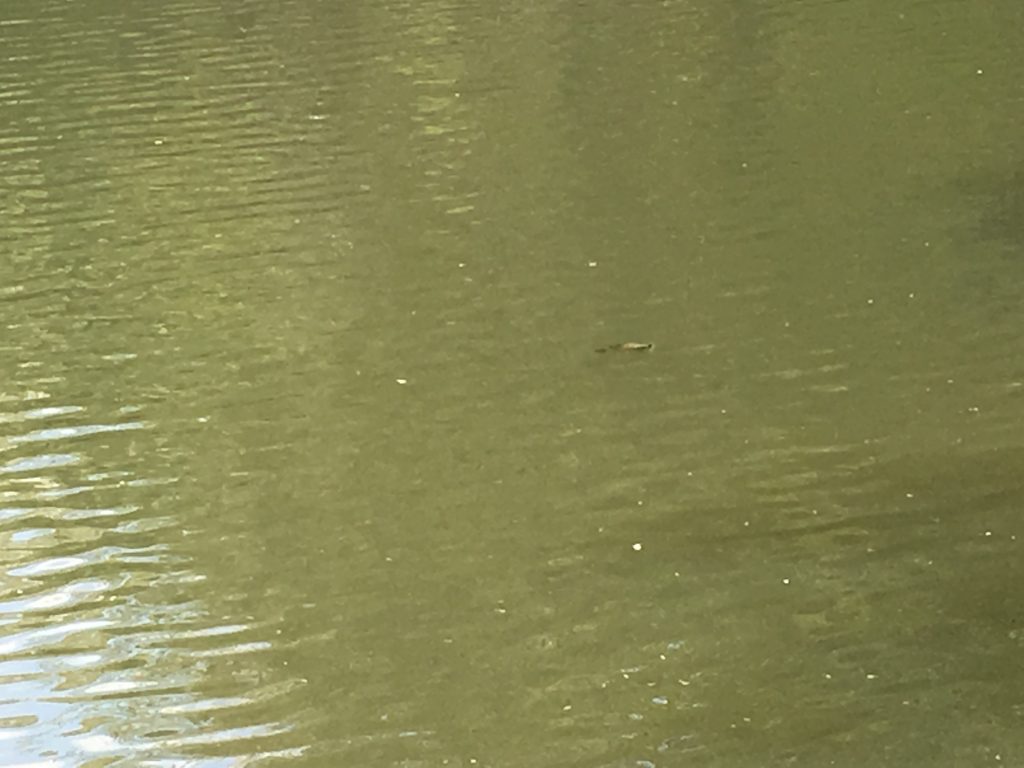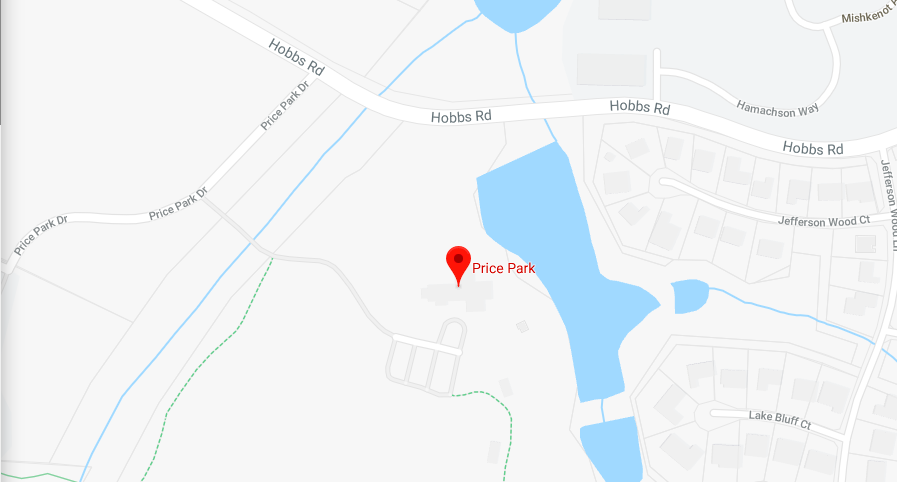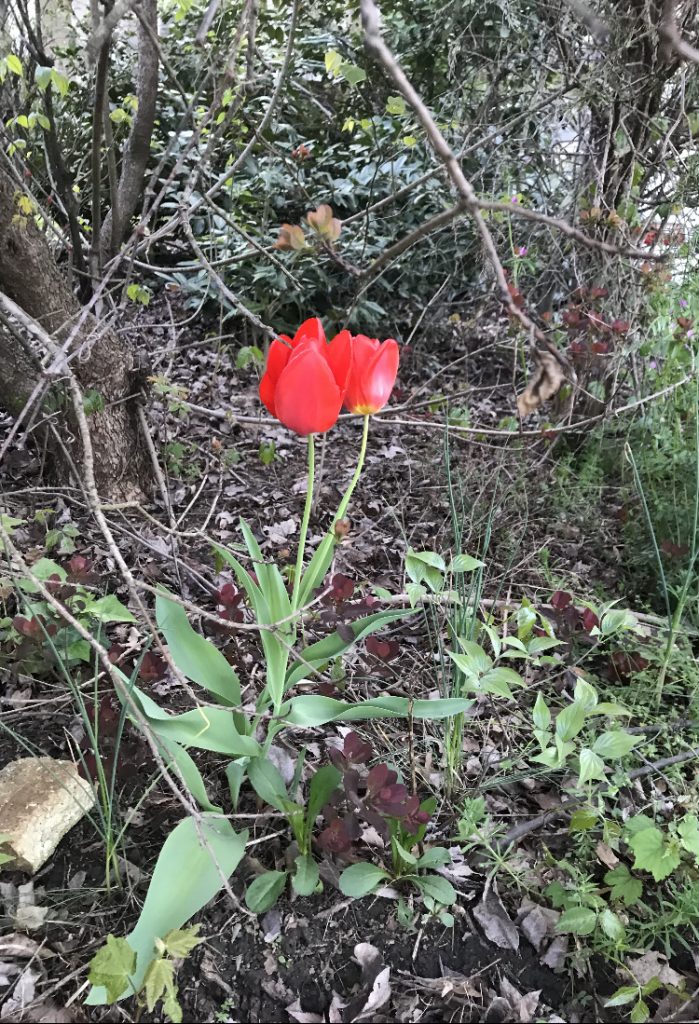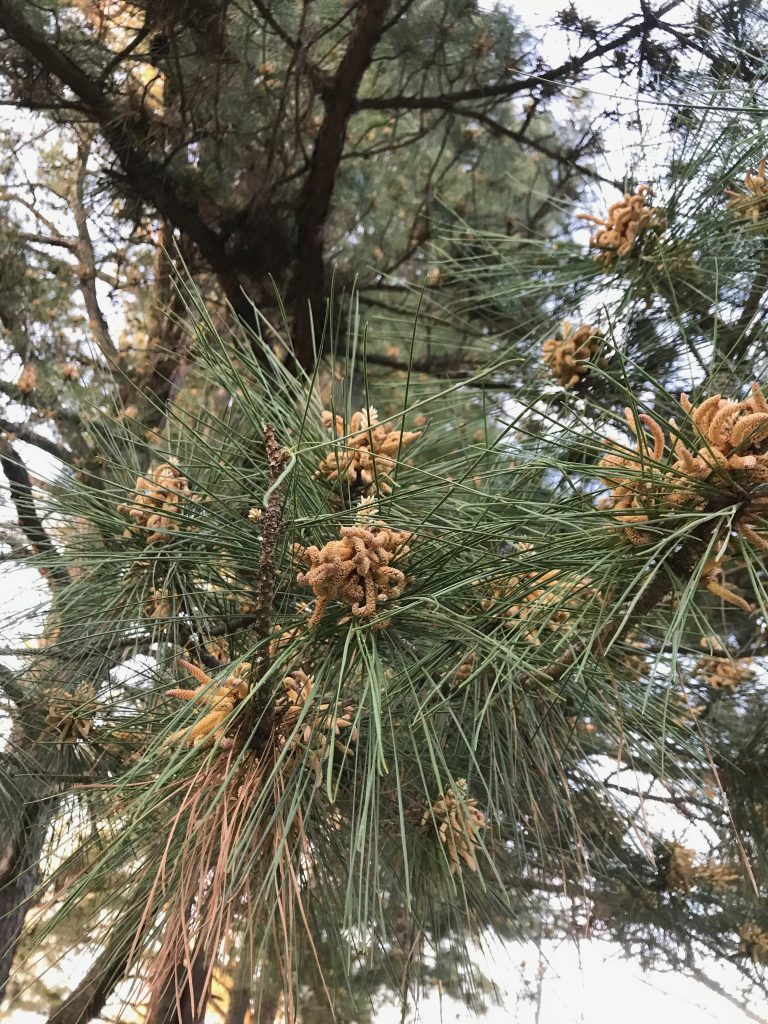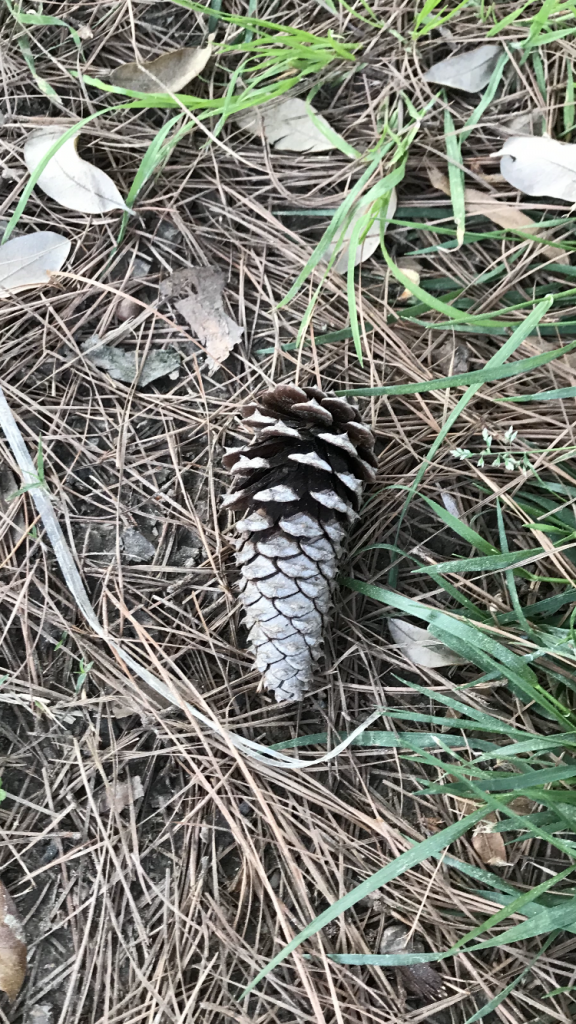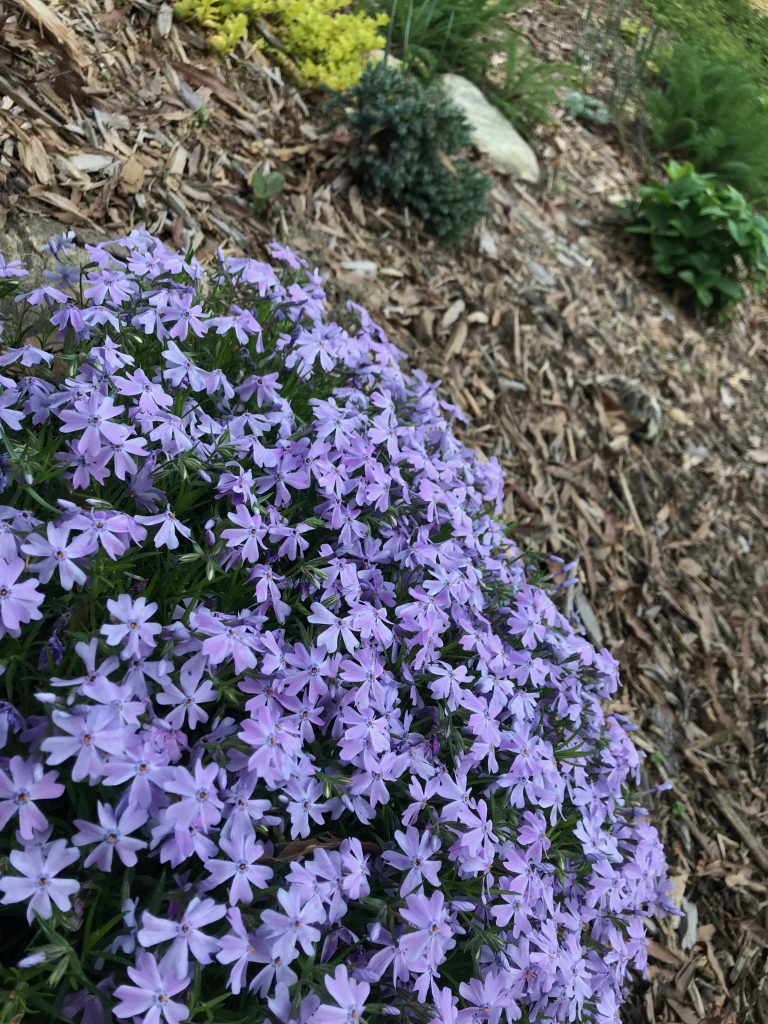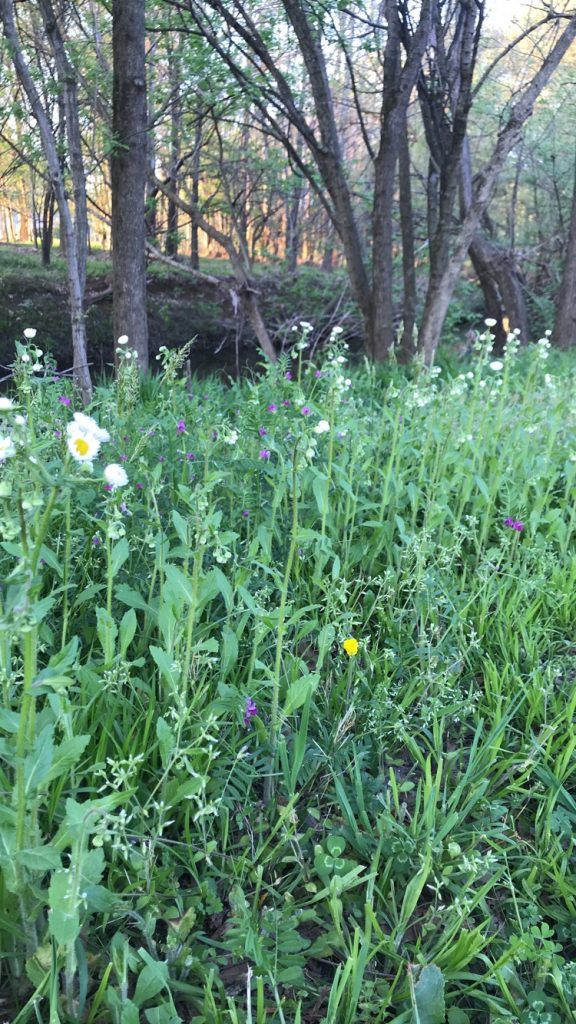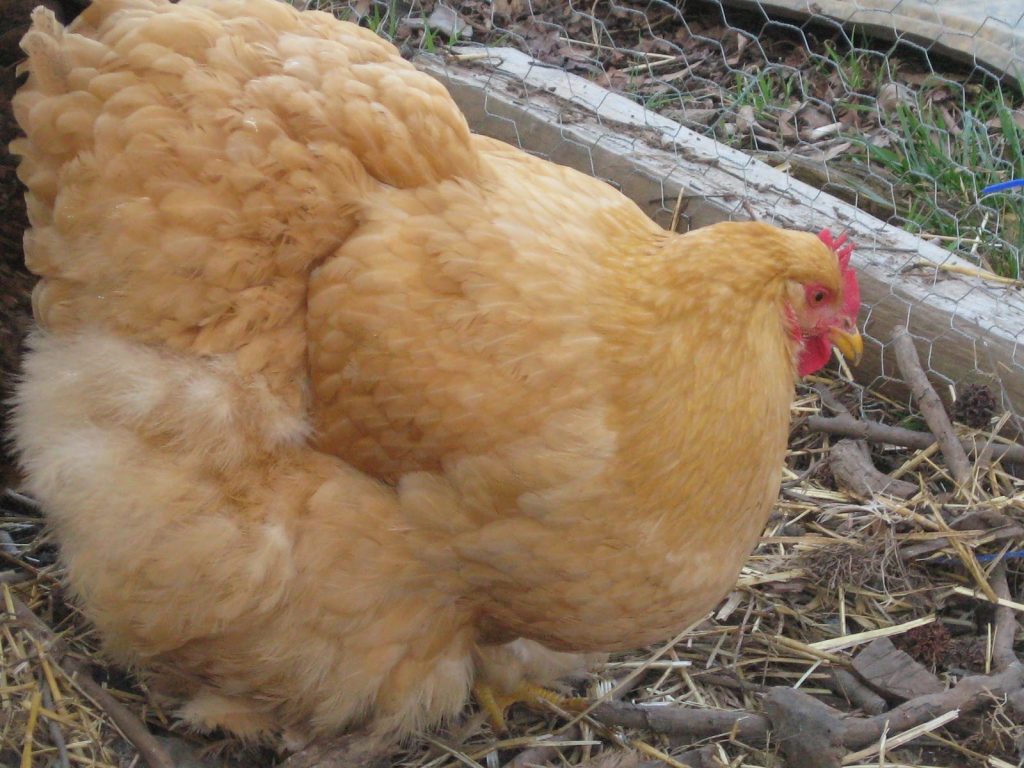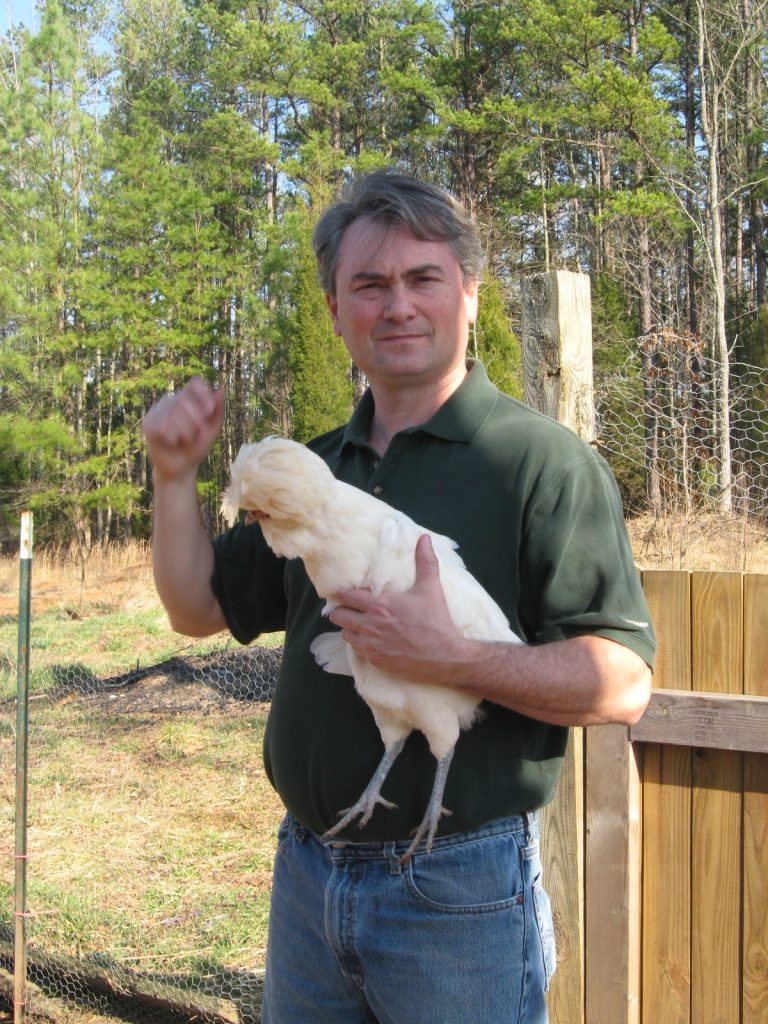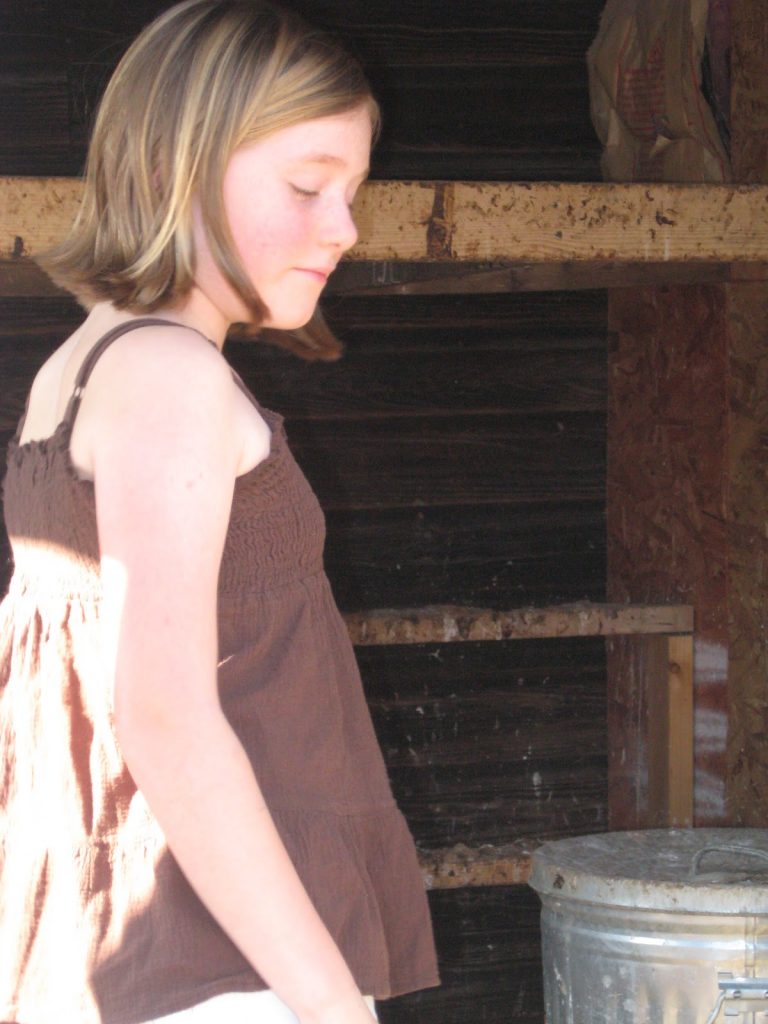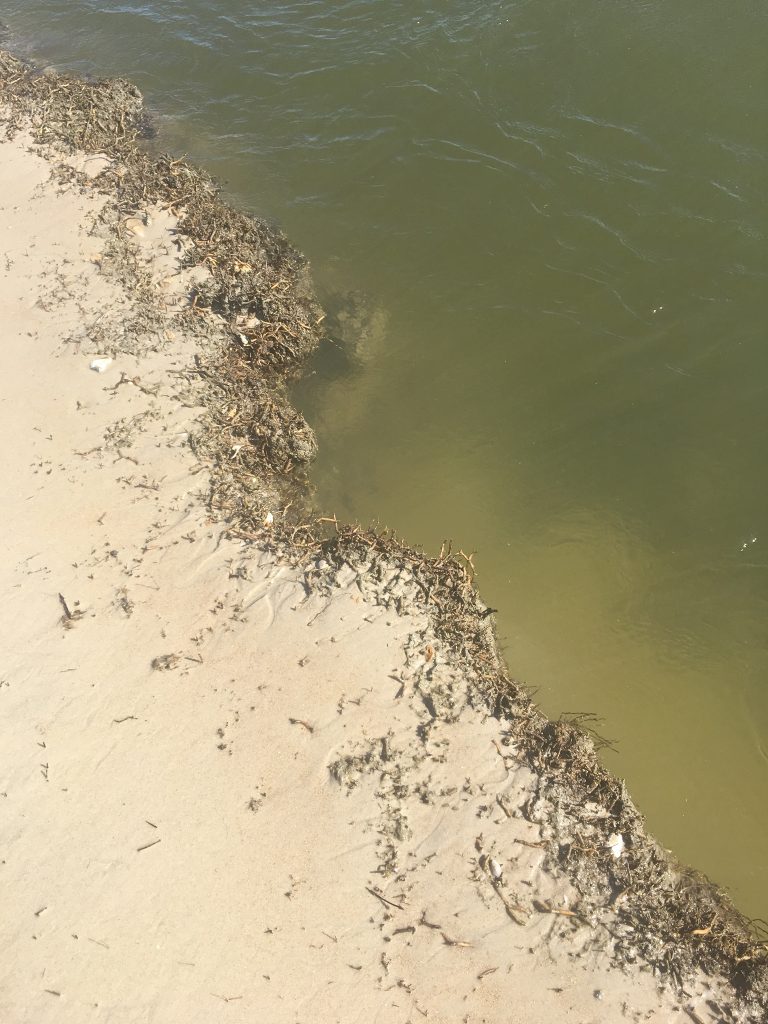Triad Park, as I have stated numerously before, is beautiful any time of the year. It is interesting to go into my archive of photos and compare images from the same part of the trail taken at different times of the year. Through analyzing these photos, the many transformations that a forest goes through during a one year cycle become apparent. From the browning of green in autumn to the brightening of the plants in the spring, there is never a boring moment on the trail.
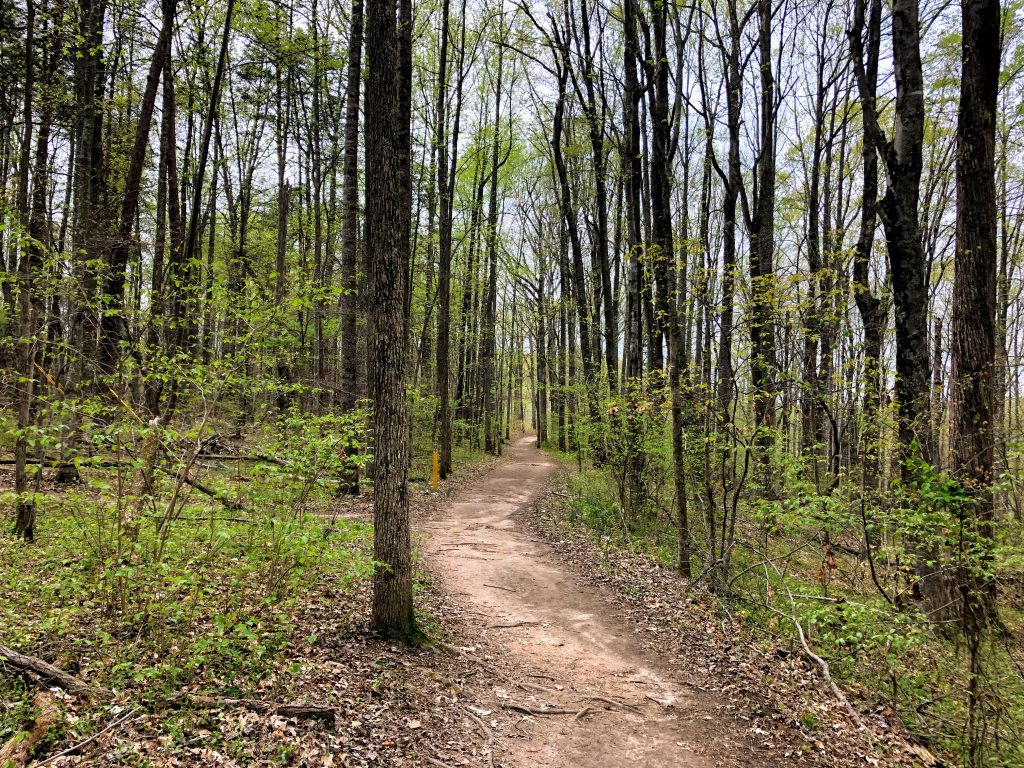
The photo above was taken today during my daily run on the trail. It happens in an instant; the trees go from bare to lush in what feels like no time at all. What’s fascinating about Triad Park in April is how the leaves on trees and the grass on the ground seem to be creeping out of hiding, starting in patches but fanning out into what we see during the summer months. Once everything is fully grown, the forest is like an entirely new entity when compared to photos of it during the winter.
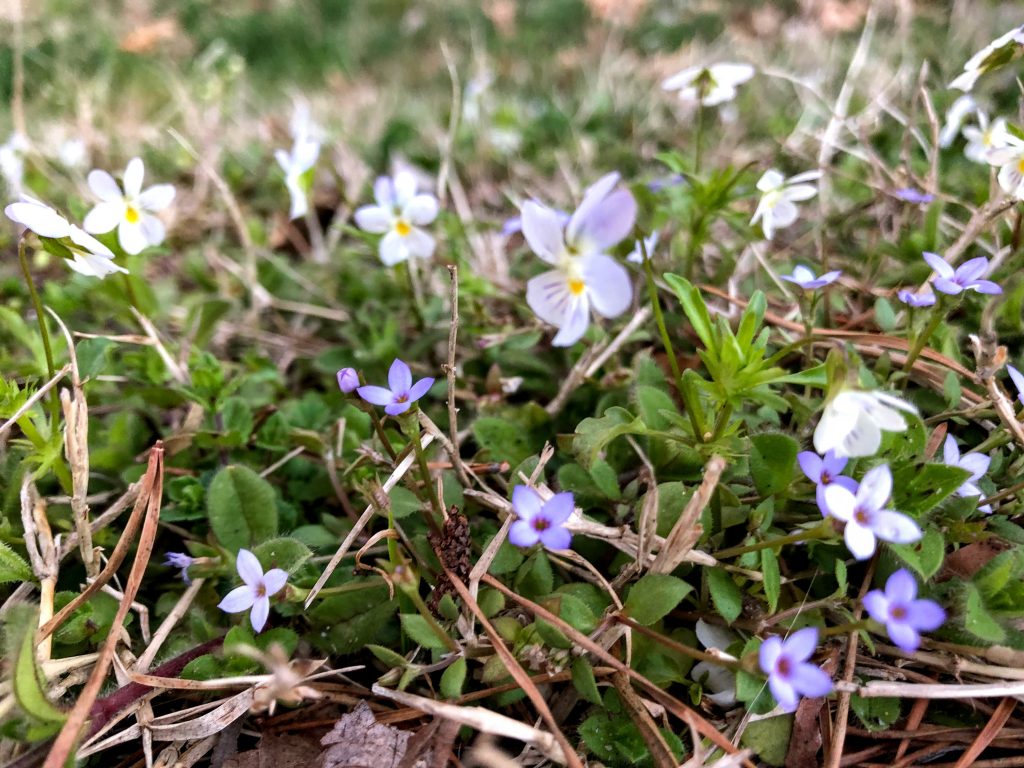
Another thing I love about Triad Park is how there are wonderful natural sights to see outside of the main hiking trail. For example, directly outside of the trailhead are patches of “johnny jump up,” also known as Viola tricolor or wild pansies. These pleasant-looking wildflowers also tend to grow in the yard outside of my house, so seeing them around the trail at the park are all the more special. These flowers usually spring up from March to mid-April. Whenever I see them in the grass, I know that spring has arrived.
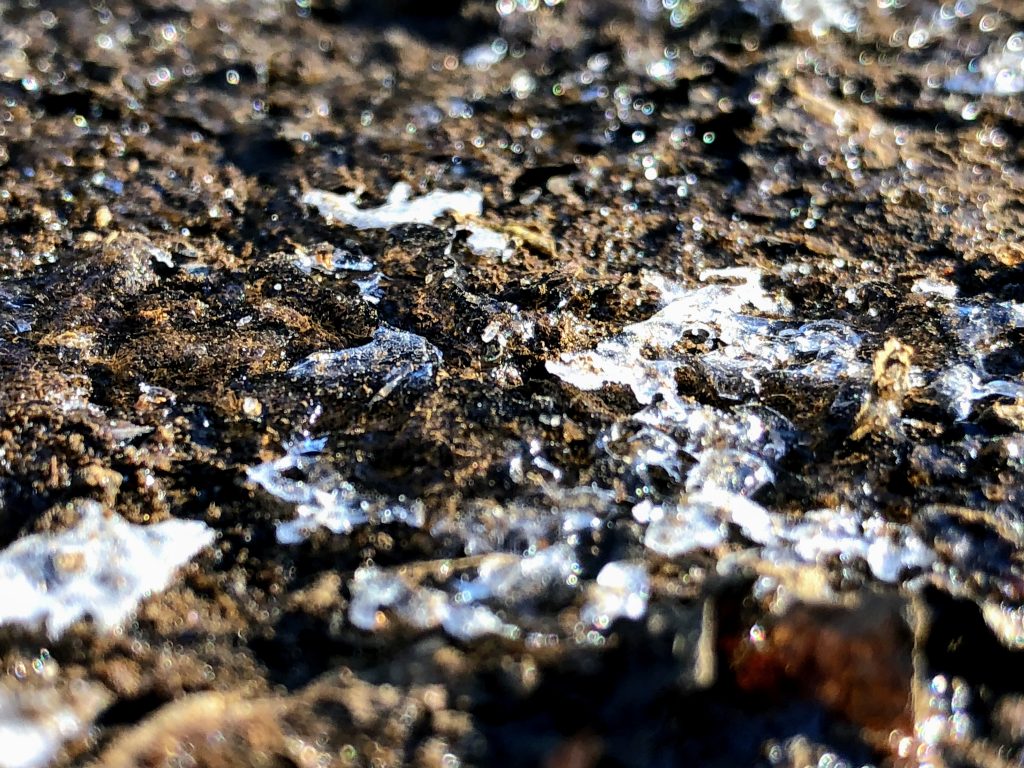
While wildflowers and sprouting vegetation are always pleasant to see, winter is nevertheless an awesome time to go hiking in the Triad Park woods. Evergreen trees such as the loblolly pine still add pigment to the forest, and if you time it right, you can see some icy creations such as the one in the photo above. It is also important to note that the crunching sound that occurs from walking on the icy soil is very, very satisfying.

These things serve as a reminder that winter is *not* a time to avoid frolicking in the natural world. While, yes, the temperatures can sometimes be quite frigid, I still prefer cool and crisp weather to the hot and humid climate that is so common during August here in North Carolina. Plus, without the freezing temperatures, I could not have captured cool icy photos. Winter also is a good time to appreciate the beautiful imagery that the warmer months provide.
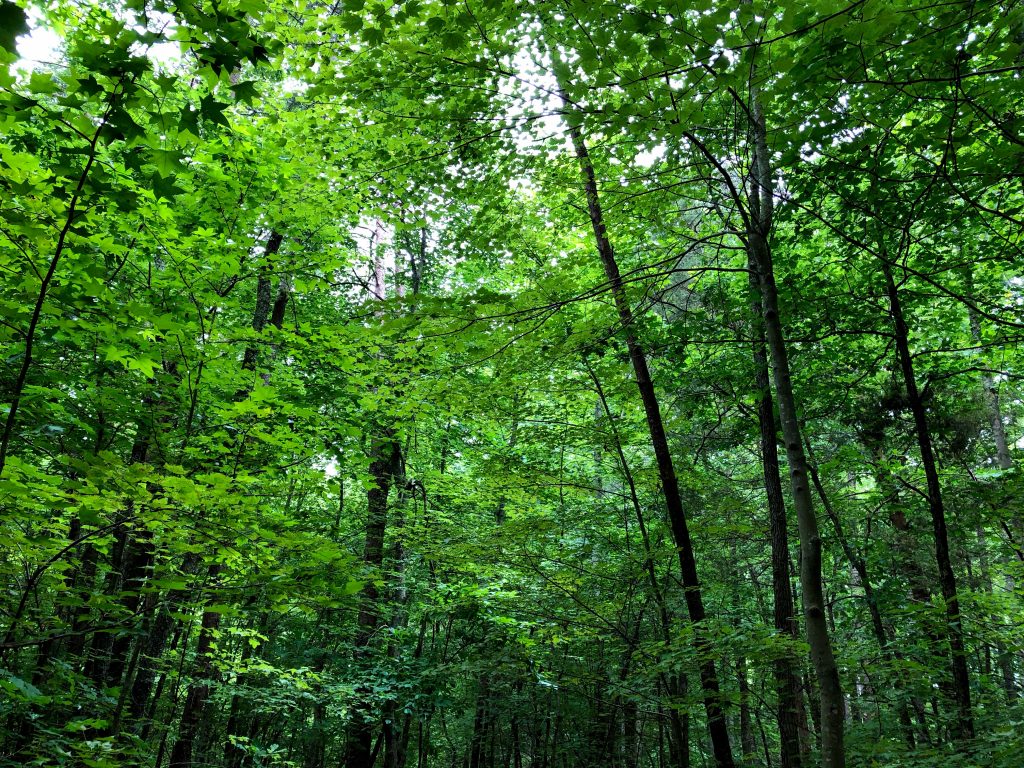
The photo above is a big contrast to the more bleak-looking photos of the Triad Park forest during winter. In June, the woods are like a luscious wall of green. If the color green makes you nauseous, you’d probably throw up. It is such a sensory overload that one lap on the trail is a great way to become mindful. When in the midst of such a sea of green, it is easy to forget one’s own worries and float away on the sights of the forest.



